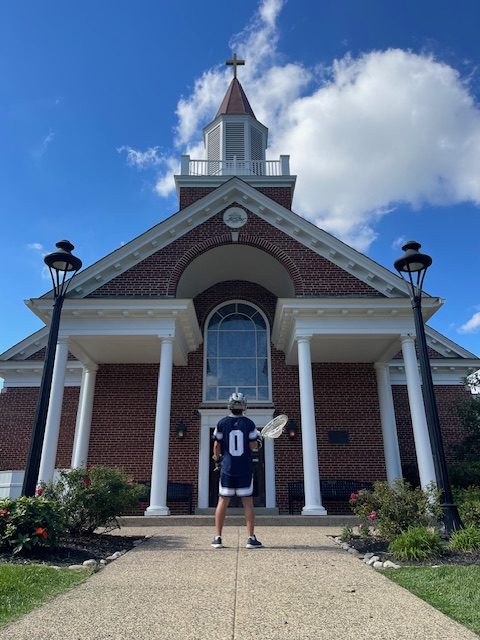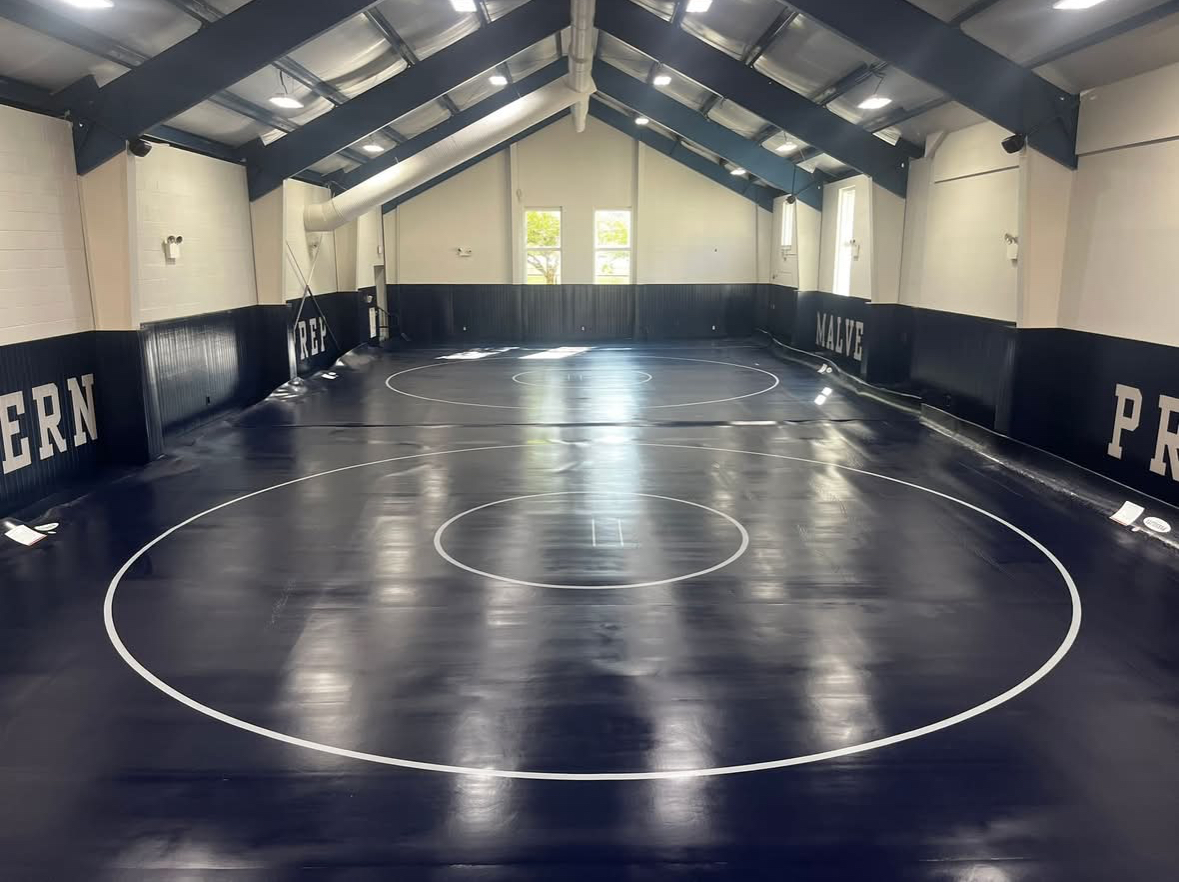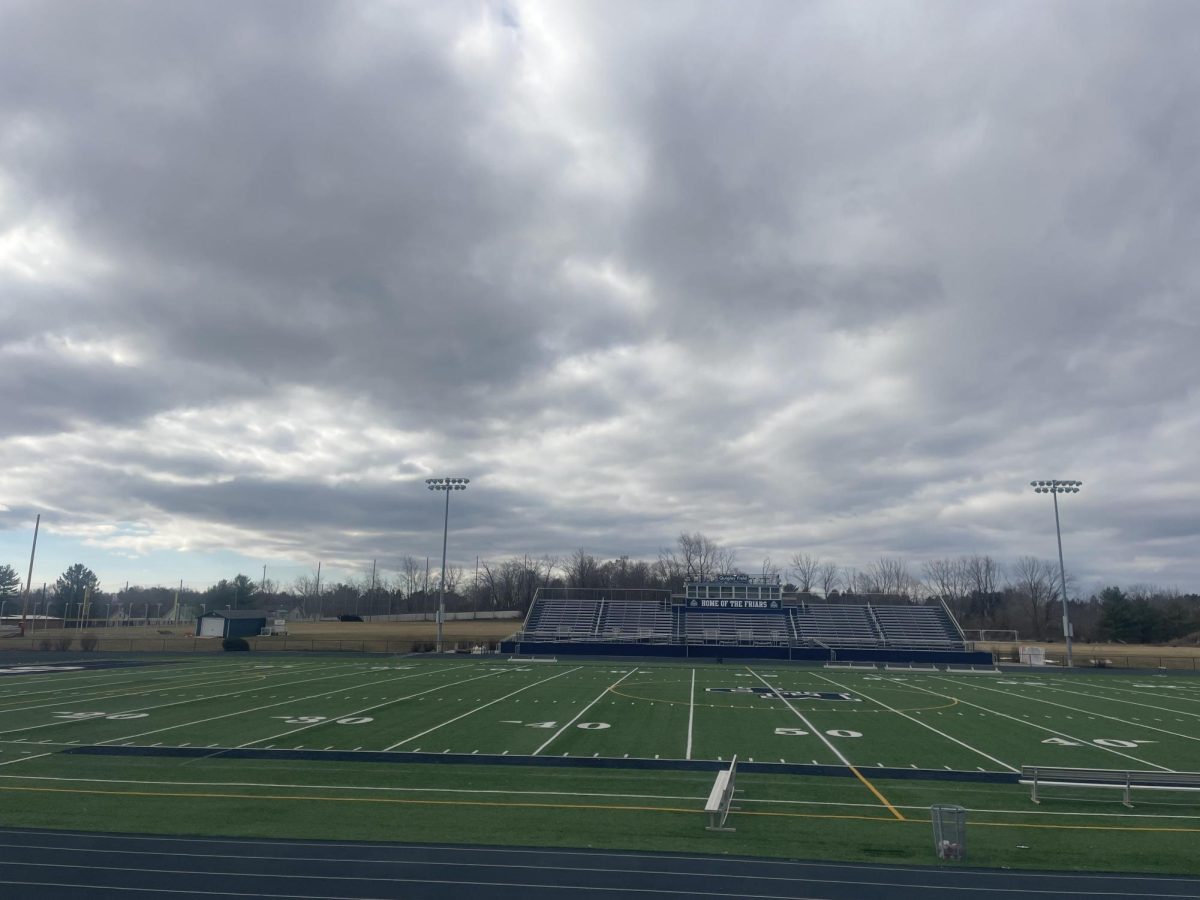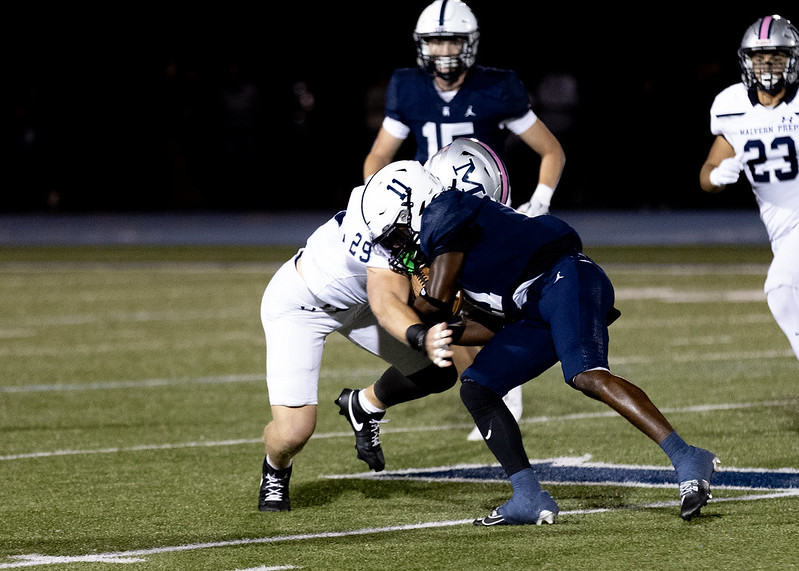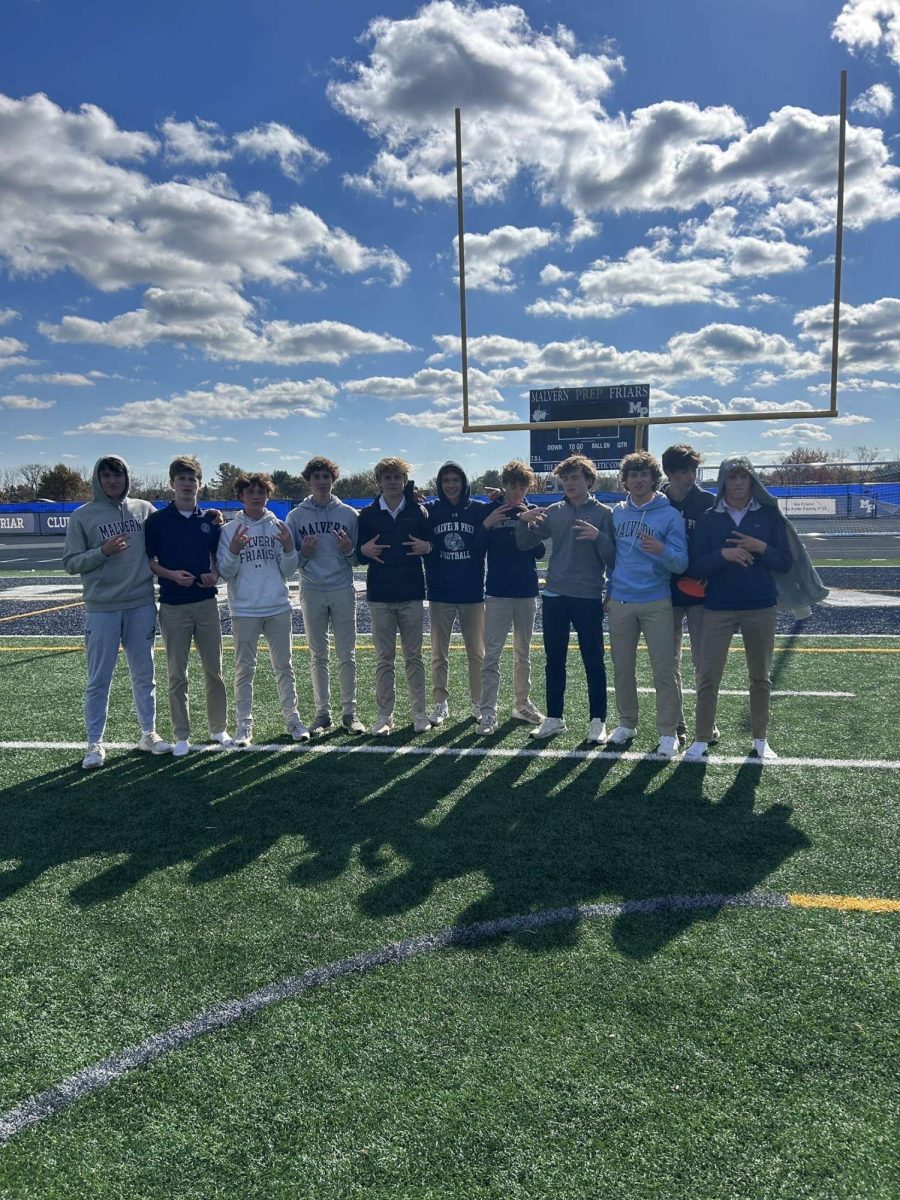While concussions are taking the spotlight, especially in football, Malvern is trying to get ahead of the curve in concussion prevention and research.
The first thing a player should do if he feels that he has suffered from a concussion is to tell someone. It is not worth the risk to go back in the game and get even more hurt.
“We do not want anybody to ignore the symptoms; we want them to embrace them and make sure they see a qualified professional to help them,” Head Football Coach Dave Gueriera said.
At Malvern, the best person to go and see for a concussion is the Head Athletic Trainer Mr. William Mills.
“I think here at Malvern we do a good job [with concussions],” Gueriera said. “Mr. Mills is at the forefront on prevention and treatment of concussions. As Malvernians, we are in really good hands.”
Juniors Tyler Francis and Andrew Franks have both suffered concussions this year due to football, but for different reasons.
Francis suffered his concussion during a practice, and was officially diagnosed after a JV game against LaSalle. At first, he was unaware that he had gotten one.
“During the first couple days, I didn’t really realize it. Towards the end of the week, I started to get more symptoms,” Francis said. “I couldn’t concentrate or focus, I started to forget more things. Noises and light started to bother me too. I finally went to Mr. Mills, and he diagnosed me.”
Francis missed two days of school, and has missed four weeks of football. He had to take multiple tests with Mills that tested his reactions, his speed, and his memory. Francis has suffered three concussions now, and he said this one is the most serious.
Francis did resume playing again, but his concussion was still affecting his ability to play.
“Originally, Mills had me take the test again, and then I was going through contact,” Francis said. “I think I came back too early and I wasn’t fully healthy, so that made my symptoms come back.”
This explains the importance of being fully healed from a concussion before returning to the field.
“A player is more prone to another concussion if he hasn’t been healed,” Gueriera said. “Concussions that are treated correctly tend to have no side effects.”
Franks suffered his concussion through playing tackle football with a bunch of his friends after an Eagles game. Franks missed four days of school, and also was academically limited for another week. He was also subjected to multiple concussion tests.
“It really messed me up with schoolwork. I really missed two full weeks of school work, which I eventually have to make up,” Franks said. “I got hurt right before the start of the opening of Inter-Ac play, so I’m missing a lot of the important games of the season.”
Malvern is taking huge strides in the right direction when it comes to prevention and detection to keep the players as safe as possible. This year, each player on Malvern’s football team has a GForce Tracker and “Defend Your Head” to reduce the chance of concussion.
“The GForce tracker tracks the force of each blow,” Gueriera said. “So if someone does get a concussion, they are able to measure what the force was that may of caused it. The Defend Your Head is a shell that goes over top of a helmet as an added layer of protection.”
Ms. Carly Burns is on an internship at Malvern with Mills and his athletic training team. She is also helping Mills with his dissertation as he works towards his Doctorate of Science in athletic training and neuroscience. As a part of this process, she is involved with the GForce tracker program at Malvern.
“What we’re doing is setting up and activating those GForce trackers to record the impacts,” Burns said. “You can actually go on the computer and see the location of the hit. It’ll come up with red for the most impact, yellow for medium, and green for not as much of an impact.”
The GForce program also involves what Burns referred to as a “sideline viewer” tool, which tracks every impact that occurs on the field within 200 yards. Data for each impact is immediately registered; a flash drive collects all of it and it can then be viewed on a computer.
Malvern has about 100 of these GForce trackers. These trackers will not only be used for football; the goal is for them to be used for all sports at Malvern.
Malvern has a leading research team on concussions, consisting of Mills, Assistant Trainer Mr. Ryan O’Kane, Burns, and the other student interns working in the trainer’s office. They are pioneers in the field, and are more advanced in their research and protocols than most college programs.
“We actually are doing cutting edge research here at the school,” Mills said. “Even though we’re a little school in Malvern, Pennsylvania, we’re doing research at the highest level even Division I schools [in the NCAA] are doing right now.”
A team of faculty and staff make up Malvern’s concussion team. This team includes Mills, School Nurses Mrs. Catherine McGettigan and Mrs. Carly Lynch, School Psychologist Dr. Dorothy Sayers, Upper School Learning Specialist Ms. Francine Cox, Middle School Learning Specialist Ms. Carissa Casey, and Middle School Athletic Director Mr. William Haus. They meet every Wednesday to communicate over who has suffered a concussion. They check in with any person who has sustained a concussion either in or out of school. The protocol and recovery process is geared towards constant communication with the student in regards to his symptoms and how he feels.
“Before we had this, I was trying to manage it all, and it was a lot of work,” Mills said.
In regards to the future, Mills thinks that while great progress is being made, Malvern’s research on the topic will not stop and the ways Malvern tries to prevent concussion will evolve.
“The goal for me would be every athlete who starts in sixth grade or ninth grade gets one of these [GForce] sensors, so that every activity that they participate in is part of the data on the sensor,” he said.


